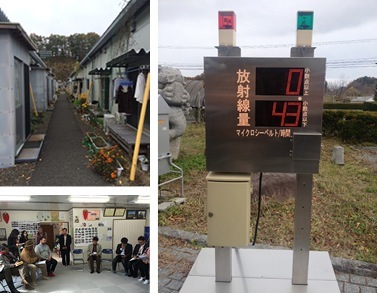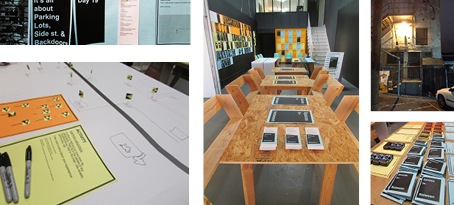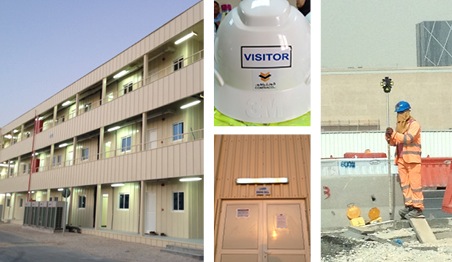
Transgenerational Emergency Recovery: A 100 Year Action Plan. Fukushima, Japan. 2014 – Present. Image Credit: Sean Donahue
Inclusive design. People-centered design. Design for all. Universal design. Each of these practices is an attempt to articulate a design approach that puts the individual at the center of the design agenda. For me this approach takes shape a bit differently in that it also forcibly puts at its center multiple points-of-view, orientations and abilities. This practice has led me to produce some pretty unusual outcomes for a designer—graphic design for people who do not see, communication spaces for people who do not speak and technology for people who have no power. And although these projects were designed to support issues significant to others, they simultaneously afforded me a unique opportunity to question the convenient assumptions we so often default to when considering what people need.

Spaces In-Between: Transient Designs for Permanent Communities. Hollywood, CA. 2013. Image Credit: Sean Donahue
For me, the benefit in leading a design practice that embraces the idea of inclusivity is that it challenges me to question my own assumptions. I’ve learned to stop viewing the world through the lens of what I think people may need or have the ability to do (or not do). Instead, focusing on what it means to experience a lived life on terms unique to each person or community. That means recognizing that the ability to experience delight can be as important to someone as the ability to pick something up. Or that mobility means connecting with friends not just getting to the bus. Or that the simple act of eating bread made like that from your village can make anxieties disappear, if only for a moment.
As a designer I have the ability to influence people’s built and material environments. So how is it that I choose to exercise this with inclusivity? Answering this question has diversified my point of view and expanded the range of my practice—from designing with aging low-vision readers to designing with migrant laborers in Qatar to designing with trans-generational families trying to return to radioactive free homesteads in Japan. In these projects you quickly see the changes in the day-to-day realities of our world. These changes are providing new challenges and opportunities that desperately need to be addressed in new ways—21st Century ways.
Global issues of scale, access, authority and development are expanding the very definition of design. In fact, facing the challenges involved in approaching design with an inclusive mindset is essential to understand where designers ought to be headed in the future. Where do we want to make our contributions felt? To whom? And How? We are no longer able to claim ambivalence: Failure to address these questions constitutes a willful ignorance and renders us culpable. This, however, is the gift inclusivity has provided: It’s a lens that magnifies my own responsibility in addressing these global issues while simultaneously designing new approaches and frameworks that enable me to create work that truly makes an impact.

Migrant Worker Labor Rights: Legislation, Programs and Best Practices. Doha, Qatar. 2013-2015. Image Credit: Sean Donahue
You can see examples of innovative inclusive design from all over the world at the upcoming Design that Makes a Difference Showcase this Fall at Art Center. The exhibition hosted by Sean and Art Center’s own Media Design Practices+Field Program and co-curated by the Norwegian Design Councils, Innovation for All program and the Royal College of Arts, Helen Hamlyn Center for Design.
Design that Makes a Difference Showcase
November 9-17, 2015
Wind Tunnel Gallery, South Campus, Art Center College of Design
Sean Donahue is a core faculty member in the graduate Media Design Practices/Field track at Art Center College of Design and principal of Research, a Los Angeles-based design practice








